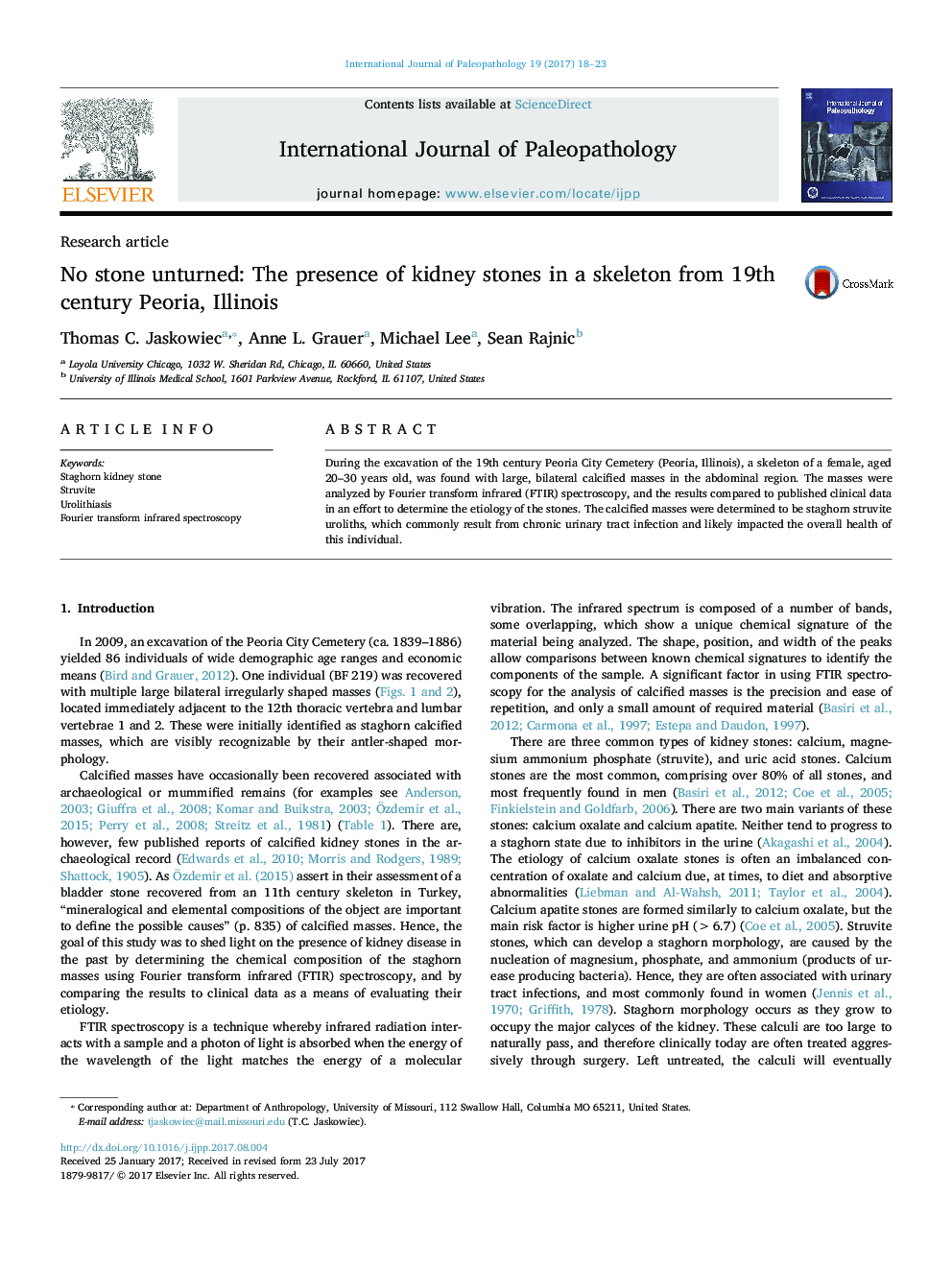| Article ID | Journal | Published Year | Pages | File Type |
|---|---|---|---|---|
| 4760550 | International Journal of Paleopathology | 2017 | 6 Pages |
Abstract
During the excavation of the 19th century Peoria City Cemetery (Peoria, Illinois), a skeleton of a female, aged 20-30 years old, was found with large, bilateral calcified masses in the abdominal region. The masses were analyzed by Fourier transform infrared (FTIR) spectroscopy, and the results compared to published clinical data in an effort to determine the etiology of the stones. The calcified masses were determined to be staghorn struvite uroliths, which commonly result from chronic urinary tract infection and likely impacted the overall health of this individual.
Related Topics
Life Sciences
Biochemistry, Genetics and Molecular Biology
Physiology
Authors
Thomas C. Jaskowiec, Anne L. Grauer, Michael Lee, Sean Rajnic,
